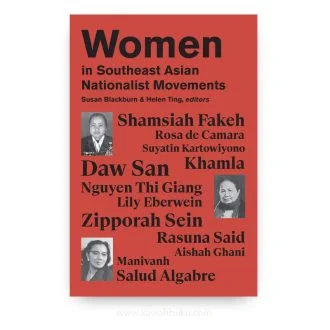Southeast Asian Middle Classes: Prospects for Social Change and Democratisation consists of papers originally presented at the International Seminar “Beyond the Crisis: Southeast Asian Middle Classes into the Twenty-First Century Prospects for Social Change and Democratisation” held at Universiti Kebangsaan Malaysia (UKM) on 25-28 April 2000. In a way, this volume is a sequel to the one published earlier in 2000 by the UKM Press, titled Southeast Asia into the Twenty-First Century: Crisis and Beyond (edited by Abdul Rahman Embong and Juergen Rudolph) in terms of its scope as well as the currency of its theme which has the 1997-98 Asian financial and economic crisis as its background.
The above constitutes some of the questions explored in the various chapters of this book. Written by experts from various countries, this book offers important insights into the transformation of the Southeast Asian societies and their middle classes, particularly the roles played by members of the middle classes in effecting change and democratization, particularly their engagement with the state, market, and society. While adopting a broad sweep of the pre-crisis situation, it focuses mainly on the crisis’ aftermath during which occurred the turmoil that transformed the political landscape of the core Southeast Asian countries.
Modernization theory has it that as a country undergoes modernization and as the middle class develops, there is a greater tendency towards universalism and democracy. This theory based on the Western European model sees modernization and democracy as inseparable twins. Nevertheless, experiences abstracted and generalized as universal are often conjectural and culture-specific. Unlike in Western Europe, the rise of the Southeast Asian middle classes was part of post-independence capitalist economic development which in the main was state-driven.
The middle classes created under these circumstances tend to be servile and beholden to the state, with neither the heroism nor the democratization and modernity proclivity of their European counterpart. However, as recent events in Southeast Asia have shown, sections of the middle classes in these countries have come to the forefront together with the broad masses in the struggle against authoritarian rule and for democracy.
The growth of the middle-class-led civil society organizations and alternative media namely the Internet is very significant in creating spaces for democratic participation and discourses on affairs of society. Contrary to the characteristics of their birth and expansion, members of this class have become a force for change and democratization, although admittedly, they are more advanced in some countries than in others. How the middle-class actors respond to the state and how the latter responds to middle-class struggles and demands, in short, the dynamics of state-class relations constitute the overall theme of this book.











Reviews
There are no reviews yet